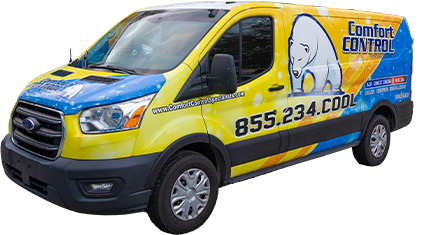[vc_row][vc_column][vc_column_text]
Energy Efficient Home Improvement Credit:
Beginning Jan. 1, 2023, the credit equals 30% of certain qualified expenses, including:
- Qualified energy efficiency improvements installed during the year
- Residential energy property expenses
- Home energy audits
There are limits on the allowable annual credit and on the amount of credit for certain types of qualified expenses. The credit is allowed for qualifying property placed in service on or after Jan. 1, 2023, and before Jan. 1, 2033.
The maximum credit you can claim each year is:
- $1,200 for energy property costs and certain energy efficient home improvements, with limits on doors ($250 per door and $500 total), windows ($600) and home energy audits ($150)
- $2,000 per year for qualified heat pumps, biomass stoves or biomass boilers
The credit has no lifetime dollar limit. You can claim the maximum annual credit every year that you make eligible improvements until 2033.
The credit is nonrefundable, so you can’t get back more on the credit than you owe in taxes. You can’t apply any excess credit to future tax years.
You can claim:
30% of project cost with $2,000 being the maximum amount credited.
What Products are Eligible?
For heat pumps, ENERGY STAR offers a general certification and a cold climate certification.
In general, all ducted heat pumps that have earned the ENERGY STAR label are eligible, as well as certified mini-split systems (non-ducted) with:
- SEER2 > 16
- EER2 > 12
- HSPF2 > 9
Among the models that earn the ENERGY STAR Cold Climate designation, eligible systems are:
- ducted with EER2 > 10
- mini-splits with
- SEER2 > 16
- EER2 > 9
- HSPF2 > 9.5
Note: The information provided here about Air-Source heat pumps that are eligible for the tax credit is the most current available. Currently, eligible equipment must “meet or exceed the highest efficiency tier (not including any advanced tier) established by the Consortium for Energy Efficiency which is in effect as of the beginning of the calendar year.” The eligibility requirements are subject to change based on the final CEE Criteria and the Internal Revenue Service (IRS).
See Definitions. (Source: EnergyStar)
In addition to limits on the amount of credit you can claim for any particular equipment installation or home improvement, there are annual aggregate limits. The overall total limit for an efficiency tax credit in one year is $3,200. This breaks down to a total limit of $1,200 for any combination of home envelope improvements (windows/doors/skylights, insulation, electrical) plus furnaces, boilers and central air conditioners. Any combination of heat pumps, heat pump water heaters and biomass stoves/boilers are subject to an annual total limit of $2,000. (Note: ENERGY STAR certified geothermal heat pumps are eligible for a separate tax credit and not counted against these limits.)
Annual Limits on Energy Efficient Home Improvement Tax Credits
In addition to limits on the amount of credit you can claim for any particular equipment installation or home improvement, there are annual aggregate limits. The overall total limit for an efficiency tax credit in one year is $3,200. This breaks down to a total limit of $1,200 for any combination of home envelope improvements (windows/doors/skylights, insulation, electrical) plus furnaces, boilers and central air conditioners. Any combination of heat pumps, heat pump water heaters and biomass stoves/boilers are subject to an annual total limit of $2,000. (Note: ENERGY STAR certified geothermal heat pumps are eligible for a separate tax credit and not counted against these limits.)
Click here to explore Ducted Heat Pumps
Click here to explore Mini-Split Heat Pumps
Who can use this credit?
Principal Residence Owners
Upgrades must be to an existing home & your principal residence. New construction and rentals do not apply.
A principal residence is the home where you live most of the time. The home must be in the United States. It can include a house, houseboat, mobile home, cooperative apartment, condominium, and a manufactured home.
How can I maximize my tax credits?
Given the way the annual aggregate limits are structured, it may be prudent to spread your improvements over a few years. If your heating or cooling system is old, and you are considering a new air source heat pump, it is always wise to optimize your attic insulation first, so you don’t pay for more heating and cooling than you actually need. Making these upgrades together in one year would allow you a tax credit of up to $1,200 for the insulation and up to $2,000 for the heat pump. Similarly, you could combine a heat pump installation with window/door replacements. In that scenario, the $2,000 credit for the heat pump could be combined with tax credits up to $600 total for the windows/skylights plus $500 for two or more doors.
If you replace your water heater the following year, you would be eligible for another 30% tax credit, up to $2,000 plus up to $600 if you need an electric panel upgrade to accommodate the new water heater.
This tax credit is effective for products purchased and installed between January 1, 2023, and December 31, 2032.
For additional information on this program, please don’t hesitate to contact the Comfort Control Specialists or visit the links below for a comprehensive outline of Energy Star and IRS Guidelines.
https://www.energystar.gov/about/federal_tax_credits/air_source_heat_pumps
https://www.irs.gov/credits-deductions/energy-efficient-home-improvement-credit[/vc_column_text][/vc_column][/vc_row]




